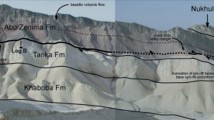Abstract
Extensive researches have been carried out on the conventional sulfate attack, while it has been found that the thaumasite form of sulfate attack (TSA), sulfate attack at low temperature, has just been discovered and its mechanism is not well understood so far. In this study, the sulfate attack of cement paste incorporating 30% mass of limestone powder was investigated. After 20 °C water cured for 7, 14, and 28 days, respectively, 20 mm cube specimens were exposed in a 5% magnesium sulfate solution at (6 ±1) °C for periods up to 240 days. Their appearance change, compressive strength development were examined at different storage time, and selected paste samples were examined by X-ray diffraction (XRD), Fourier transform infrared spectroscopy (FTIR), scanning electron microscopy (SEM) and energy dispersive spectroscopy (EDS). The results indicate that all Portland-limstone cement pastes suffer from appearance deterioration to some extent. The compressive strength of cement paste initially increases and after 120 days decreases with increasing exposed period. In addition, the cement paste with short curing time is more susceptible to sulfate attack, which directly leads to the formation of non-binder thaumasite crystal accompanied by the formation of ettringite, gypsum and brucite, and becomes a white, mushy, and incohesive matrix. Additionally, the extent of sulfate attack is greater and the formation of thaumasite is observed earlier for shorter curing time.
Similar content being viewed by others
References
Collepardi M. Thaumasite Formation and Deteriorarion of Historical Buildings[J]. Cement and Concrete Composites, 1999, 21: 147–154
S Kohler, Heinz D, Urbonas L. Effect of Etringite on Thaumasite Formation[J]. Cement and Concrete Research, 2006, 36: 697–706
Crammond N J. Thaumasite in Failed Cement Mortars and Renders from Exposed Brickwork[J]. Cement and Concrete Research, 1985, 15: 1039–1050
Romer M. Steam Locomotive Soot and the Formation of Thaumasite in Shotcrete[J]. Cement and Concrete Composites, 2003, 25: 147–154
Erlin B, Stark D C. Identification and Occurrence of Thaumasite in Concrete[J]. Highway Research Record, 1965, 113: 108–113
Crammond N J, Norah C. The Occurrence of Thaumasite in Modern Construction-a Review[J]. Cement and Concrete Composites, 2002, 24: 393–402
Santhanam M, Cohen M D, Olek J. Mechanism of Sulfate Attack: A Fresh Look Part 1:Summary of Experimental Resuns[J]. Cement and Concrete Research, 2002, 32: 915–921
Crammond N J. The Thaumasite Form of Sulfateattack in the UK[J]. Cement and Concrete Composites, 2003, 25: 809–818
Hartshorn S A, Sharp J H, Swamy R N. Thaumasite Formation in Portand-limestone Cement Pastes[J]. Cement and Concrete Research, 1999, 29: 1331–1340
Hui Y, Bin X X, Liu B W, et al. Effect of Initial Curing Conditions on Thaumasite Form of Sulfate Attack of Cement Based Materials[J]. Applied Mechanics and Materials, 2013, 275-277: 2136-2140
Hansen T C. Physical Structure of Harden Cement Paste[J]. A Classical Approach, Materials and Structures, 1986, 19: 423–436
Powers T C, Brownyard T L. Studies of the Physical Properties of Hardened Portland Cement Paste[J]. Journal of American Concrete Institute, 2003, 25(8): 59–70
Edge R A, Tayler H FW. Crystal Structure of Thaumasite, [Ca3Si(OH)6· 12H2O](SO4)(CO3) [J]. Acta Crystallographica: Section B, 1971, 27: 594–601
Bensted J. Some Problems with Ettringite and Thaumasite in the Gypsum Plaster/Cement Contact Area[C]. Proceedings of the International RILEM Symposium on Calcium Sulfates and Derived Materials, France, 1977
Lachowski E E, Barnett S J, Macphee D E. Transmission Electron Optical Study of Ettringite and Thaumasite[J]. Cement and Concrete Composites, 2003, 25: 819–822
Torres S M, Lynsdale C J, Swamy R N, et al. Microstructure of 5-yearold Mortars Containing Limestone Filler Damaged by Thaumasite[J]. Cement and Concrete Research, 2006, 36: 384–394
Sahu S, Badger S. Evidence of Thaumasite Formation in Southern California Concrete[J]. Cement and Concrete Composites, 2002, 24: 379–384
Justnes H. Thaumasite Formed by Sulfate Attack on Mortar with Limestone Filler[J]. Cement and Concrete Composites, 2003, 25: 955–959
Author information
Authors and Affiliations
Corresponding author
Additional information
Funded by National Natural Science Foundation of China (No. 51378499), China Railway Corporation (No. 2014G004-R), Science and Technology of China (No. 2010G004-E)
Rights and permissions
About this article
Cite this article
Lou, L. Influence of curing duration on thaumasite formation of Portland-limestone cement pastes. J. Wuhan Univ. Technol.-Mat. Sci. Edit. 31, 1038–1042 (2016). https://doi.org/10.1007/s11595-016-1487-4
Received:
Accepted:
Published:
Issue Date:
DOI: https://doi.org/10.1007/s11595-016-1487-4




